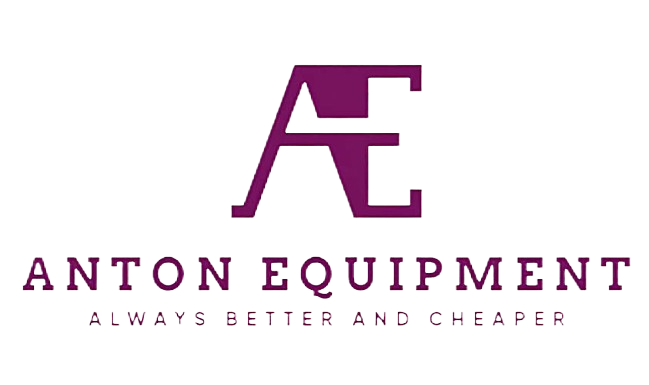News
How Quick Couplers Reduce Downtime in Multi-Task Heavy Machinery Operations
How Quick Couplers Minimize Downtime in Multi-Task Operations
Streamlining Attachment Changes for Rapid Task Switching
Quick couplers can really change how fast we switch between tasks because they let operators swap out attachments within just a few seconds flat. What this means is way less downtime on the job site since nobody has to waste precious minutes fiddling with manual tool changes anymore. These devices connect and disconnect hydraulic systems without any hassle whatsoever, which makes everything run much more smoothly for everyone involved. When businesses actually implement quick coupler systems across their operations, they tend to see quite a jump in project completion rates too. Some reports even mention around a 30% improvement in getting things done quicker. And honestly, who doesn't want to finish jobs faster? Faster turnaround times mean happier customers and operators who get home earlier instead of stuck waiting for equipment swaps.
Eliminating Manual Handling and Alignment Delays
Switching attachments the old fashioned way usually means workers have to handle things manually and line everything up just right. This takes time and drives up labor expenses. Quick couplers change all that by automating the whole swapping process so nobody needs to fiddle around adjusting anything by hand anymore. The way these devices are built actually cuts down on physical stress for operators too. Workers no longer suffer from those common injuries caused by constantly lifting and moving heavy attachments around. On construction sites or anywhere else where equipment changes happen regularly, quick couplers keep operations running smoothly without those annoying stoppages. No more wasting time trying to get parts aligned properly when there's work to be done. Sites see better safety records and get more accomplished throughout the day because of this.
Hydraulic Quick Couplers: Speed and Operator Safety
Quick couplers for hydraulic systems let workers swap attachments fast without having to drain pressure first. This saves loads of time during operations, which explains why they're so popular on construction sites and manufacturing floors where every minute counts. Most modern models come equipped with safety locks that prevent accidental disconnects while the machine is running, keeping operators safe throughout their shifts. Tests show these couplers cut down attachment changes by about 50% when compared to older manual methods, translating into real money saved over time. Construction companies, agricultural equipment operators, and even automotive repair shops have all benefited from this kind of efficiency boost, since many industries depend heavily on both speed and accuracy in their daily work.

Excavator Quick Couplers for Precision in Tight Spaces
Quick couplers on excavators are built to make life easier for operators working in cramped conditions. These attachments let workers place tools exactly where they need them without wasting time or losing progress. Some newer models come with tilt features too, allowing machines to reach angles that would otherwise be impossible in city centers where every inch counts. Real world data shows these couplers cut down waiting periods by around 40% during busy construction phases, making day to day operations run much smoother overall. For contractors dealing with tight urban sites, having this kind of flexibility means getting jobs done faster without compromising safety standards.

Skid Steer Solutions for Versatile Landscaping
Quick couplers on skid steers give landscapers something really valuable: the ability to switch attachments fast between buckets, augers, and other tools needed for different jobs around the yard. Built tough enough to handle rough outdoor work sites, these couplers last longer than standard models so companies don't have to replace them every season. When crews can swap out attachments in seconds instead of minutes, whole projects get done quicker. Clients notice this speed difference and tend to come back for more work, which means steady income month after month. For landscaping businesses trying to stay competitive while keeping costs down, investing in quality quick couplers makes sense both from a practical standpoint and long term financial perspective.

Construction Sites: Efficient Tool Transitions Under Pressure
On construction sites where workers need to switch tools fast to hit those tough deadlines, quick couplers make all the difference. When crews are under pressure, these devices cut down on the wasted minutes spent swapping out equipment manually, so teams stay on track with their schedules. Construction pros know this well because they see firsthand how much quicker jobs get done when everyone isn't fumbling around with bolts and connectors. Industry stats back this up too showing that sites equipped with quick couplers often see around a quarter boost in overall productivity. That kind of improvement matters greatly when trying to keep projects moving forward without unnecessary delays.
Mining Operations: Reducing Equipment Idle Time
Quick couplers are pretty important in mining because they help cut down on how long equipment sits idle when switching between different digging tools. These devices work well across all sorts of hydraulic systems, so miners don't have to wait around while changing attachments. When operators need to switch from one task to another during their shifts, having quick couplers means they can get back to work faster instead of losing precious minutes. Some studies show these couplers probably save around 30-35% of downtime in actual field conditions. That kind of time savings translates directly into better money management for companies since machines stay productive longer. Plus, less waiting around means fewer fuel burns and lower emissions overall, which makes the whole operation greener in practice.
Regular Maintenance to Prevent Mechanical Failures
Keeping quick couplers in good working order makes all the difference when it comes to avoiding expensive breakdowns that hold up entire projects. A solid maintenance plan means checking those locking mechanisms and seals regularly, maybe once every few weeks depending on how hard they're being used. When maintenance gets done before problems happen, these connectors last longer and work better overall. Look at what's happening across industries: businesses that stick to regular checkups see around 40 percent fewer failures in their equipment. That kind of data really backs up why spending time on preventive care pays off. Most experienced technicians will tell anyone who'll listen that a little bit of attention during normal operations saves hours of frustration later on when something goes wrong unexpectedly.
Safety Protocols for Hydraulic and Electrical Systems
Strict safety rules matter a lot when working with hydraulic quick couplers because these systems operate at dangerously high pressures. When workers get proper training on how to handle these connectors and understand why regular inspections are necessary, it really cuts down on accidents happening at work sites. Looking at data from various safety reviews shows something interesting too: companies following best practice recommendations see around 60% fewer incidents overall, which speaks volumes about just how important those safety measures actually are. Beyond protecting people though, good safety practices help keep machinery running longer without breakdowns while maintaining efficient operations across the board.

